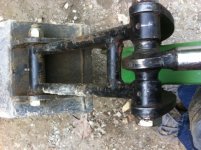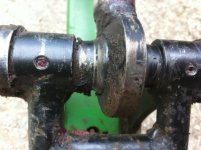I'd be very tempted to start with a left-hand drill, maybe 3/16 or so. There is a very good chance that the bit will catch instead of cut and walk the whole rest of the zerk right on out for you. Based on 1. the threads are already full of grease, so lubricated and protected from rust, and 2. it was busted off by a side impact, not by trying to turn it while rusted in, so the odds of the threads actually being free to turn once you can get it to spin are pretty good. I'd also try spinning it with a punch or small chisel. Maybe even see if you can get it to spin by lightly jamming a small screwdriver in it.
I prefer left hand drills over most ez-out type things, since they do not wedge inside the hole and jam the fastener tighter, and if it doesn't walk the fastener out, it still drills a hole (though you do have to tighten your chuck more often).
My brother had some extractors that were not tapered, they had very small hardened fins on the sides to just catch the sides of a drilled hole when you drove them into place with a hammer, but I don't know where he got them. This design also let him rock the fasteners, and did not require him to turn them all one way for that wedging action to get them free. Rocking back and forth (like when cutting threads) rather than just keep applying more and more pressure in one direction seems to be one of those things that really helps for rusty stuff.


